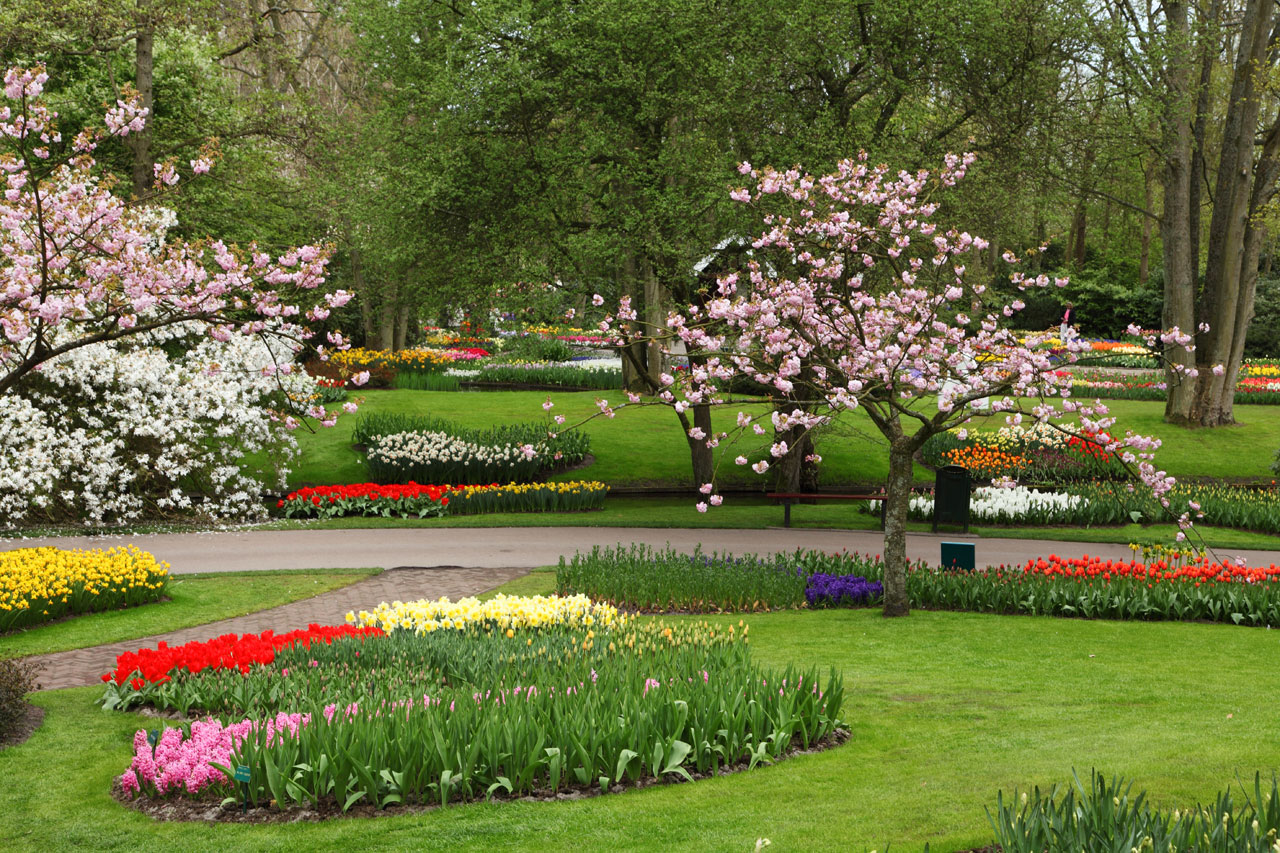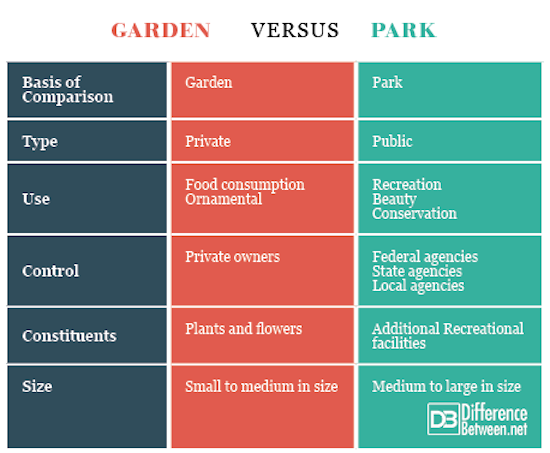Difference Between Garden and Park
Ever left your house or office feeling exhausted but once you take in that good air around some nice trees or flowers under the sunlight everything changes? From preventing myopia in children, to improving mental health, to generally boosting physical health, being outdoors has immense benefits that can’t be overlooked.
Science claims benefits of being outdoors either in parks and gardens can’t be quantified. As a result, several government organizations and institutions have dedicated the energy to set up rules and regulations that ensure these ample public parks are set up within a given area. Private home owners are also going the extra mile to beautify their homes with landscaped gardens.
What is a Garden?
A garden is an outdoor planned space, that is set aside for cultivation of plants and flowers. The main reason for setting up a garden could either be for consumption or beauty. Gardens are either made of artificial or natural materials or both. The act of gardening is an activity that involves planting and maintaining the flowers and plants within a given space. A gardener is an individual who takes up the gardening role. Gardens can be endowed with additional features such as ponds, fountains, artificial and natural waterfalls or even creeks. A large-scale garden that is used for food production is referred to as a farm.
There are close to 100 different types of gardens in the world today. The common ones include backyard garden, flower garden, landscape garden, greenhouse garden and sacred/therapeutic gardens. Gardens are important to the environment as they assist in preventing climate change in different ways.
One of the major ways involve the use of carbon from the air. Increased carbon in the air results in air pollution which causes global warming. Gardens through their composition of plants and trees assist in maintaining the environment, so if you don’t have one go ahead and make use of your backyard or even balcony. One plant can go a long way in saving our planet.
What is a Park?
A park is a natural, artificial or semi-natural public area set aside for ornamental or recreational purposes. Some larger parks are used for conservation of wildlife and indigenous plants. Parks may consist of grassy regions, landscapes, rocky areas, trees, buildings, recreational centres, sports facilities, swimming pools, soccer pitches, dog designated areas and kids play arenas. You are also bound to find monuments and fountains within parks.
In America most parks have walking and biking trails coupled with sports centers for games such as football and baseball. Many parks are built adjacent to water bodies and can consist of artificial beaches and boating areas. Different parks have different laws and regulations. Some parks allow people to have picnics and barbecues with their friends and have designated benches for seating. Some allow pets with restrictions such as the dogs have to be on leashes while some don’t.
Some parks can be large with thousands of square miles of natural areas, comprising of mountains, rivers, wildlife and vegetation. These vast areas usually allow game drives and have park entry fees. Some have accommodation centers within them, especially those in Africa, but in America most people prefer camping in the wild. These larger parks can also have canoeing centres and designated regions for hiking, and some skiing and snow hoeing areas especially in the Northern Hemisphere countries.
Similarities Between a Garden and a Park
- Both parks and gardens have plants and flowers.
- Both parks and gardens are often used for ornamental purposes.
- Both require maintenance and proper planning to meet their purpose.
Differences Between a Garden and a Park
-
-
Type
-
Gardens are usually private in nature. Most gardens are built within home owner’s back or front yards. Some opt to create small gardens in their balconies or kitchen windows. Parks are public in nature and are meant to be used by the general population.
-
-
Use
-
Gardens are used for two main reasons; either ornamental or food consumption purposes. Consumable crops can be planted within gardens for small families. Landscaped gardens are used for beautification. Parks are mostly used for recreational or ornamental purposes. This is because they contain sports centers, walking trails, playing centers and picnic grounds.
-
-
Control
-
Gardens are controlled by owners of the homes or land. Parks are controlled by the relative authority or government body. The federal agencies are in charge of National Park Services, Forest Services and all related resources. State Agencies control the state parks and large Game Preservation Parks. The local agencies are in charge of the smaller parks within towns and cities.
Public parks and recreation are provided at all levels of government: federal, state, and local.
-
-
Constituents
-
Gardens contain flowers and plants mostly. Parks on the other hand, in addition to the flowers and plants contain children play facilities, walking trails, rivers, recreation facilities, soccer pitches, kids playing centers and so much more.
-
-
Size
-
Gardens are in general much smaller than parks. Parks could range from a couple of square miles to several thousands of square miles. The largest known park is Northeast Greenland National Park that is 375,000 square miles in size.
Garden vs. Park: Comparison Chart
- Difference Between S Corp and C Corp - September 9, 2018
- Difference Between Terrace and Balcony - September 9, 2018
- Difference Between Anabaptists and Evangelicals - August 31, 2018
Search DifferenceBetween.net :
Leave a Response
References :
[0]Whitehead, D., Patton, G., Patterson, J., & Trust, H. and W. G. (2001). A survey of historic parks & gardens in Herefordshire. Hereford and Worcester Gardens Trust.
[1]Robinson, W. (1878). The parks, promenades & gardens of Paris described and considered in relation to the wants of our own cities and of public and private gardens. Macmillan & Company.
[2]Watkins, J., Wright, T. W. J., & Heritage, E. (2007). The Management & Maintenance of Historic Parks, Gardens & Landscapes: The English Heritage Handbook. Frances Lincoln.
[3]Image credit: https://www.publicdomainpictures.net/en/view-image.php?image=8351&picture=flower-garden
[4]Image credit: https://upload.wikimedia.org/wikipedia/commons/thumb/6/60/Green_Park%2C_London_-_April_2007.jpg/640px-Green_Park%2C_London_-_April_2007.jpg



